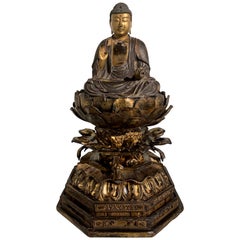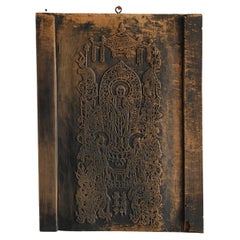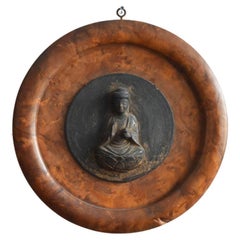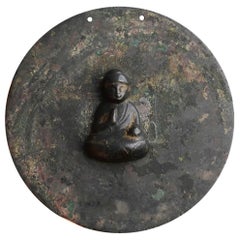Yakushi Nyorai
Antique 16th Century Japanese Edo Sculptures and Carvings
Rock Crystal
Antique Late 19th Century Japanese Edo Wall-mounted Sculptures
Beech
Recent Sales
Antique 16th Century Japanese Other Metalwork
Copper
Antique 15th Century and Earlier Japanese Arts and Crafts Antiquities
Copper
Antique Early 18th Century Japanese Edo Sculptures and Carvings
Rock Crystal
Antique Late 18th Century Japanese Edo Sculptures and Carvings
Rock Crystal
Antique Early 19th Century Japanese Edo Sculptures and Carvings
Rock Crystal
Antique 19th Century Japanese Edo Figurative Sculptures
Cypress
Antique 18th Century Japanese Edo Figurative Sculptures
Cypress
Antique 16th Century Japanese Other Abstract Sculptures
Other
People Also Browsed
2010s American Modern Music Stands
Brass
21st Century and Contemporary Italian Modern Side Tables
Crystal
Early 20th Century Swedish Art Deco Cabinets
Birch
Early 20th Century Indian Anglo-Indian Screens and Room Dividers
Teak
Antique 19th Century Chinese Chinese Export Lacquer
Wood, Lacquer
Vintage 1970s American Mid-Century Modern Credenzas
Chrome
20th Century French Modern Tapestries
Wool
Vintage 1930s French Art Deco Beds and Bed Frames
Gold Leaf
Early 20th Century Chinese Art Deco Chinese and East Asian Rugs
Wool
Antique Mid-18th Century French Louis XV Bookcases
Oak
Antique Late 19th Century Japanese Meiji Toys and Dolls
Silk, Wood
Antique 1890s American Aesthetic Movement Sterling Silver
Sterling Silver
Antique Late 18th Century Italian Baroque Cabinets
Metal, Wrought Iron
Antique 1820s Japanese Edo Toys and Dolls
Wood
Antique Late 18th Century Japanese Edo Toys and Dolls
Wood
Antique Late 18th Century Danish Gustavian Commodes and Chests of Drawers
Brass
Finding the Right Sculptures-carvings for You
Asian sculptors have worked in materials including wood, bronze and jade. Artists and artisans have used traditional techniques to depict deities, scenes from culture and more, and today, antique Asian sculptures and carvings are a popular choice for provocative and sophisticated home decor.
In China, the Qing dynasty, from the mid-17th century to the early 20th century, brought about significant changes in art while preserving traditional culture. Many emperors during this period were patrons of the arts, such as painting, calligraphy and decorative arts. This era saw the building of new Buddhist temples, which were decorated with statues. Some of these sculptures were adorned with colorful cloisonné decoration, in which tiny compartments, or cloisons, made by soldering copper filaments to a metal surface were filled with vibrantly hued enamel.
From the 17th to mid-19th century in Japan, kimonos were worn across classes and often fastened with a netsuke, a type of small carved toggle. Artists carved these from ivory, wood, shells and coral, creating animals, flowers and mythical creatures. During the Japanese Meiji period, spanning from 1868–1912, the country began trading internationally after centuries of isolation, allowing artists to sell their work overseas. Bronze sculpture flourished around this time for creating teapots, vases and incense burners.
Asian sculpture continued to evolve in the 20th century. During the Japanese Shōwa era, from 1926–89, art was influenced by international modernist movements like abstraction, Futurism and Surrealism. Contemporary Asian sculptures and carvings continue to combine global influences and a rich heritage of technique.
Decorating a space with Asian sculptures and carvings is a great way to add interest to any corner of your home. Explore by material, period or style on 1stDibs.



